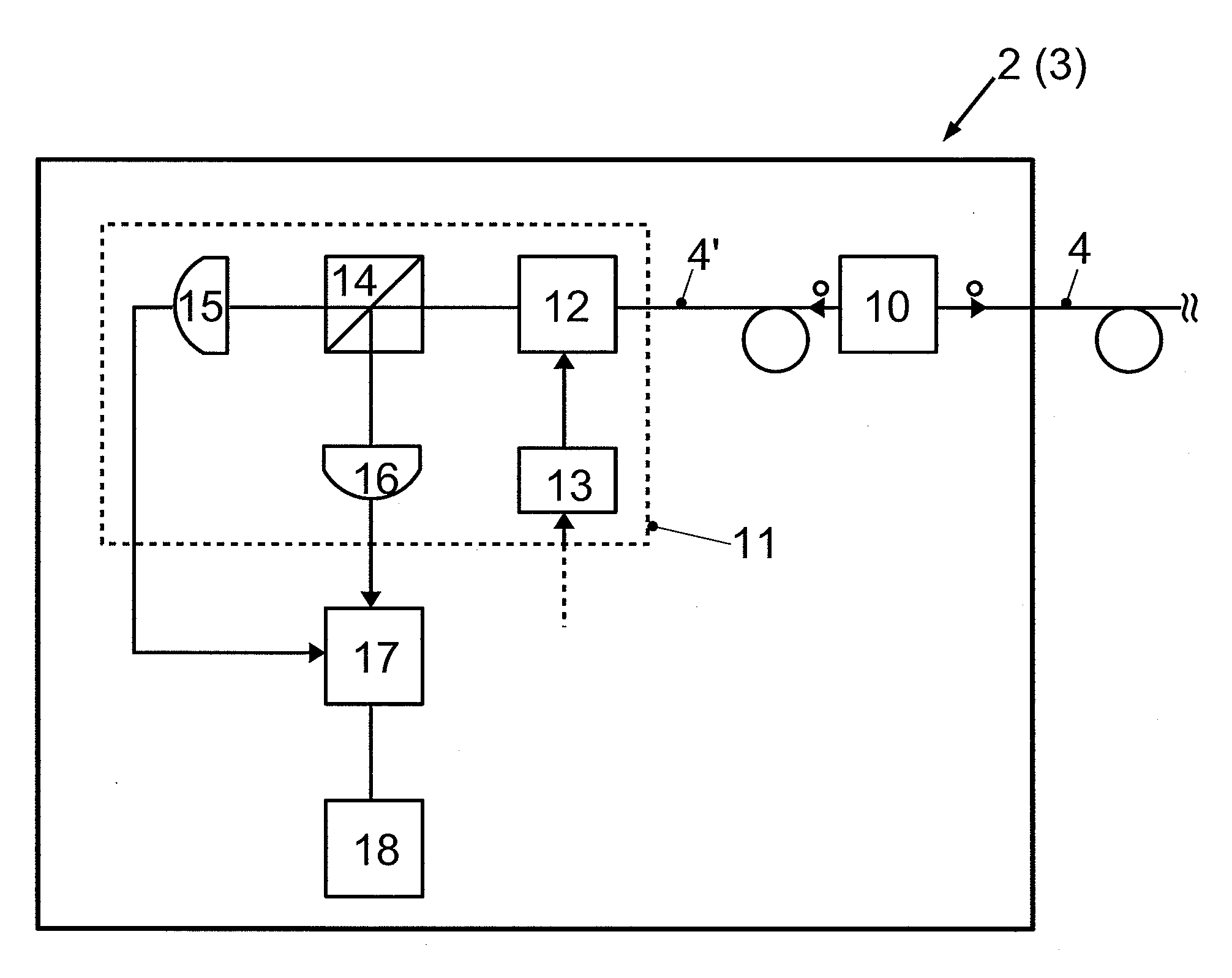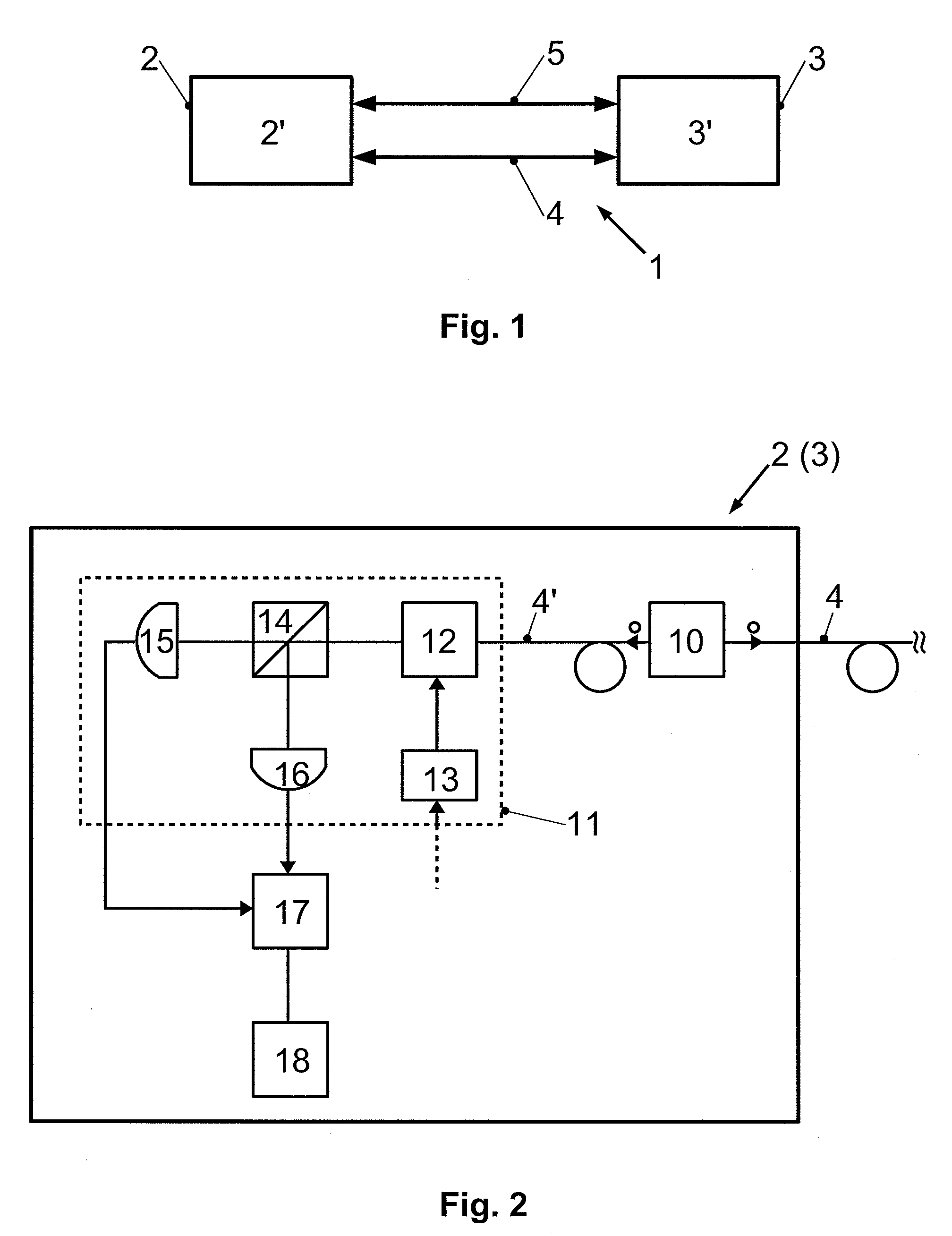Device for Generating Polarization-Entangled Photons
a technology of polarization and photons, applied in the field of generating polarizationentangled photons, can solve the problems of inability to compactly set-up (e.g., on a single optical chip), inability to compensate temperature drift, and inability to achieve compact set-up, etc., to achieve efficient electrical and thermal tuning, wide tuning range, and advantageous tuning possibilities
- Summary
- Abstract
- Description
- Claims
- Application Information
AI Technical Summary
Benefits of technology
Problems solved by technology
Method used
Image
Examples
Embodiment Construction
[0041]In FIG. 1, a conventional quantum-cryptographic connection 1 with two partners 2, 3 with appropriate apparatus 2′ and 3′, respectively, is shown, wherein an optical quantum channel 4 is provided between the two partners or stations 2, 3, on the one hand, and a classical, public data channel 5 is provided, on the other hand. The quantum channel 4 may, e.g., be formed by a fiberglass line or by the free space, wherein, in both instances, appropriate sending and receiving devices are provided in the apparatus 2′, 3′. In the literature, the stations 2, 3 are usually termed ALICE-component, and BOB-component, respectively, and a position trying to eavesdrop on the quantum channel 4 via which the crude key is exchanged, usually is termed EVE in the literature (pun, in analogy to “eavesdropper”). An explanation in greater detail particularly with regard to the design of the individual components as well as to the physical procedures, also in the case of an eavesdropping attempt, is n...
PUM
 Login to View More
Login to View More Abstract
Description
Claims
Application Information
 Login to View More
Login to View More - R&D
- Intellectual Property
- Life Sciences
- Materials
- Tech Scout
- Unparalleled Data Quality
- Higher Quality Content
- 60% Fewer Hallucinations
Browse by: Latest US Patents, China's latest patents, Technical Efficacy Thesaurus, Application Domain, Technology Topic, Popular Technical Reports.
© 2025 PatSnap. All rights reserved.Legal|Privacy policy|Modern Slavery Act Transparency Statement|Sitemap|About US| Contact US: help@patsnap.com



